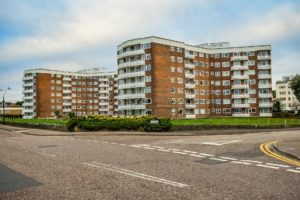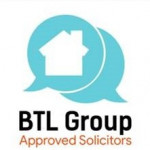Solicitors specialising in acting for Property Investors and Buy To Let Landlords
Investing in Buy To Let (BTL) properties remains a solid long-term investment strategy. However, it does need you to make sure that you get ongoing advice from experienced Buy To Let Solicitors to ensure that you are managing your compliance in an ever-shifting regulatory environment and maximising the potential of your portfolio.
Looking for experienced Buy To Let Solicitors. Whether you are buying in a personal or company name, for a FREE no strings attached initial advice and a conveyancing fee quote, call our specialist Property Investor team now on FREEPHONE 0800 1404544.
Our specialist Buy To Let Solicitors?
1. Here at Bonallack and Bishop, our Buy To Let team have all the experience you need. Over the last 20 years, we have helped well over 10,000 people just like you buy their own home or invest in buy to let property.
2. We really understand buy to let investors. The firm’s owner, Tim Bishop, and other members of the team, are active developers and investors themselves. And what’s more, unlike many solicitors, we really understand many of the property strategies used by investors including delayed completion and purchase lease options.
Click here to find out more about the delayed completion property strategy and purchase lease options.
3. And you don’t need to just take our word for expertise. We are recommended by a number of specialist property organisations including:
· Progressive Property – the nation’s biggest property investor education company appointed us as 1 of their 3 officially Approved Solicitors.
· Buy to Let Property Group – with over 40,000 members, we are their only recommended Law Firm
· HomeOwners Alliance – the country’s largest organisation championing the rights of the U.K.’s homeowners only recommend our specialist leasehold team for lease extension and freehold purchase work
4. Our work for buy to let investors isn’t limited to conveyancing.
Our extended team are here to assist you with the full range of legal advice you’re going to need in building your buy to let portfolio. And that includes help with loan agreements, joint venture and shareholders agreement documentation as well as, property disputes. 
Click here to read more about our Commercial Solicitors, our Dispute Resolution, Lease Extension and Lease Enfranchisement teams can help you.
Click here to read more about our specialist Property Investment Solicitors
Click here to read some reviews of our conveyancing lawyers from satisfied clients
What is a BTL property?
A BTL property is a property which is purchased for the purpose of renting out to one person or a group of people. BTL properties can range from a small, single studio apartment and large family home to a house in multiple occupation (HMO).
A person who owns a BTL property is referred to as a landlord. They may own one or two properties, possibly as part of a pension plan, or have a portfolio of hundreds of flats and houses.
What are the costs associated with purchasing a Buy To Let property?
If you are looking at entering the BTL market you need to factor in the following costs beyond the property price:
· Repairs and maintenance
· Legal costs, including the costs of buy to let conveyancing
· Tax on rent profits
· Council tax and utility bills when the property is untenanted
· Compliance costs, for example, gas and electric safety inspections
· Smoke alarms and carbon monoxide alarms
· Insurance on any appliances, for example, dishwashers and washing machines (if these are included in the tenancy)
· End of tenancy cleaning
Always, always, always factor in interest rate rises. This cannot be stressed enough – a small interest rate rise can lead to £100s added onto your BTL monthly mortgage repayments. You need to ensure your cash flow can cover any additional increases as raising the rent may not be an option.
How can I choose the right BTL property?
You need to think differently when looking for a buy-to-let property as your requirements will not be the same as when you purchase a home you plan to live in yourself.
Location is an extremely crucial factor; however, you need to consider what type of tenants you want first. For example, buying a flat for student accommodation in a university town will ensure you are rarely without tenants, but your repair and maintenance costs are likely to be higher (as are complaints from neighbours following parties). Furthermore, you will need to search for new tenants every year and this can be stressful.
Choosing the stability of renting to a family or young professionals may be more suitable for your long-term plans, but this comes with the risk of the property being untenanted for weeks or even months when tenants move on.
What is a rental yield?
The rental yield is the return you can expect on your BTL property. Rental yield is calculated by taking the yearly rental income of a property and dividing it by the amount you paid to purchase it plus costs. You then times that figure by 100 to get a percentage.
A good rental yield is around 7%, although many buy to lets, especially in London and the south-east reduce yields lower than that. Anything less and you may struggle to cover the mortgage, running costs and any unexpected expenses (which you can guarantee will pop up on a fairly regular basis).
How is an HMO defined?
Your BTL will fall into the category of a house in multiple occupation (HMO) if:
· at least three tenants live there, forming more than one household
· the tenants share a toilet, bathroom, or kitchen facilities
A large HMO is one where:
· at least five tenants live there, forming more than one household
· the tenants share a toilet, bathroom, or kitchen facilities
The government defines a household as either a single person or members of the same family who live together. A family includes people who are:
· married or living together – including people in same-sex relationships
· relatives or half-relatives, for example, grandparents, aunts, uncles, siblings
· step-parents and step-children
Large HMOs need a licence from the local council and minimum bedroom sizes must be met. If more than four people live in an HMO, you, as the landlord must ensure:
· the property is not overcrowded
· the electrics are checked every five years
· all shared facilities are hygienic and kept in good repair
· fire safety measures (including smoke alarms) are in place
· there are adequate rubbish bins
· gas safety checks are conducted annually
· there are adequate washing and cooking facilities for everyone
Buy To Let – what are a landlord’s legal responsibilities?
As a landlord you must comply with the following:
· Registration – you need to check whether the local authority that covers the area in which your BTL property is based requires landlords to be registered. If you are planning to convert the property into a large HMO, registration is compulsory.
· Leasehold issues – If you purchase a leasehold property you will need to seek permission from the freeholder to rent it to tenants.
Click here to find out more about the differences between freehold and leasehold
· Right to rent checks – you must check that your tenants have a legal right to live in the UK. All the information regarding how to conduct right to rent checks can be found here.
· How to rent guide – there is a legal requirement to provide tenants with the government’s How to Rent Guide before they move in.
· Gas safety certificate – this must be supplied before any tenant/s moves into the property. Checks must be carried out annually.
· Fire safety – you must ensure your BTL property complies with fire safety regulations including clear escape routes, smoke alarms on every floor, and carbon monoxide alarms if the property has a fuel burning device.
· Energy performance test (EPC) – this must be supplied to tenants, and they remain valid for ten years. The minimum band is E, however, the higher the band the better.
· Electricity tests – all new tenancies must have all electric fittings assessed for safety every five years.
· Repairs and maintenance – landlords have an ongoing obligation to carry out repairs and maintenance.
There are several other safety concerns that you need to be aware of, for example making sure that any blinds in children’s rooms are of a safe design and do not have looped cords. For extra safety, you may wish to provide fire blankets/extinguishers.
Make sure you really understand the regulation surrounding buy to lets – or make sure you use an experienced letting agent who can provide that expertise for you.
Entering the BTL market can be financially rewarding and personally satisfying. Remember, dependable tenants who respect your property and those around them are like gold and investing in keeping them long term is worth every penny.
Looking for specialist Buy To Let Solicitors? Get in touch with us today
Do not forget, our highly experienced Conveyancing team offer free phone advice and a free Conveyancing quote.
Remember, we make purchasing a BTL easy!













